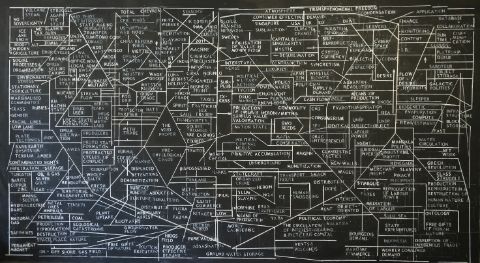Sawangwongse Yawnghwe

The Opium Parallax II. Courtesy of the artist
Sawangwongse Yawnghwe was born in the Shan State (Myanmar). A descendant of the Yawnghwe royal family of Shan, Yawnghwe’s grandfather was Sao Shwe Thaik, the first president of the Union of Burma (1948–62) after the country gained independence from Britain in 1948. Shwe Thaik died in prison following the 1962 military coup by General Ne Win. Since then, Yawnghwe’s family has lived in exile. Yawnghwe’s painting and installation practice engages politics with reference to his family history and current and historical events in Burma/Myanmar, having been one of the most vocal voices from the country to condemn the Rohingya genocide. More recently, he has engaged with the national uprising following the 2021 military coup. The Rangoon Massacre (The Ides of March) is an idealized representation of this popular swell refusing military rule, in all its diversity and in spite of all its other conflicts. The Opium Parallax II maps out the many levels of connections that define power structures throughout Myanmar’s different regions and across its borders, in other mountainous regions of South East Asia where systems of agriculture and political organization have built a long history of resistance and forms of living together outside of state and imperial control.
Commissioned by Haus der Kulturen der Welt (HKW), co-produced by Sawangwongse Yawnghwe and HKW, 2023.
Works in the exhibition: The Opium Parallax II (2023), painting, acrylic on linen, 225 × 400 cm; The Rangoon Massacre (The Ides of March) (2023), painting, acrylic on linen, 225 × 340 cm. Courtesy of the artist